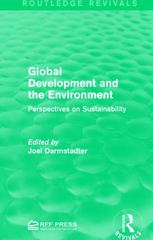Question
La = labour in agriculture Li = labour in industry Lu = labour in urban underemployed Ltot = total labour in the economy wa =
La = labour in agriculture
Li = labour in industry
Lu = labour in urban underemployed
Ltot = total labour in the economy
wa = wage rate in agriculture
wi = wage rate in industry
MPLa = value of marginal product of labour in agriculture
MPLi = value of marginal product of labour in industry
m = subsistence wage
i = fixed minimum wage in industry
Pi = Pa = 1. (price of industrial output, price of agricultural output)
Question 1. Assume the situation as depicted in the Harris Todero model and workers move from rural to urban areas until the expected return from living in the city equals the agricultural wage wa.
Assume: VMPLi = 110 - 2Li; VMPa = 60 - 025 La; There a minimum wage that must be paid to industrial workers of i = 50. The urban under-employed receive wu=30. There is a lottery for urban jobs, the probability of getting an urban job is Li / (Li + Lu), while the probability of getting an urban underemployed job is 1 - Li / (Li+Lu). Ltot= 100 = Li + La + Lu. We see that in equilibrium, we get Li*=30, Lu*=10, La*=60, wa*=45. Now assume that an investment in rural road infrastructure occurs that shifts MPLa to MPLa = 65 - 0.25 La, while everything else stays the same. How many workers will be employed in industry, how many workers will be urban under-employed? How many workers will be in agriculture? What will be the agricultural wage?
please draw graph to explain calculations
Question 2. Use the results from above to explain implications of each model for the optimal investment in agriculture and / or industry. 1. the Lewis dual sector,
2. no distortions dual sector
3. Harris-Todero migration model
please use graphs for detailed explanations
Step by Step Solution
There are 3 Steps involved in it
Step: 1

Get Instant Access to Expert-Tailored Solutions
See step-by-step solutions with expert insights and AI powered tools for academic success
Step: 2

Step: 3

Ace Your Homework with AI
Get the answers you need in no time with our AI-driven, step-by-step assistance
Get Started


